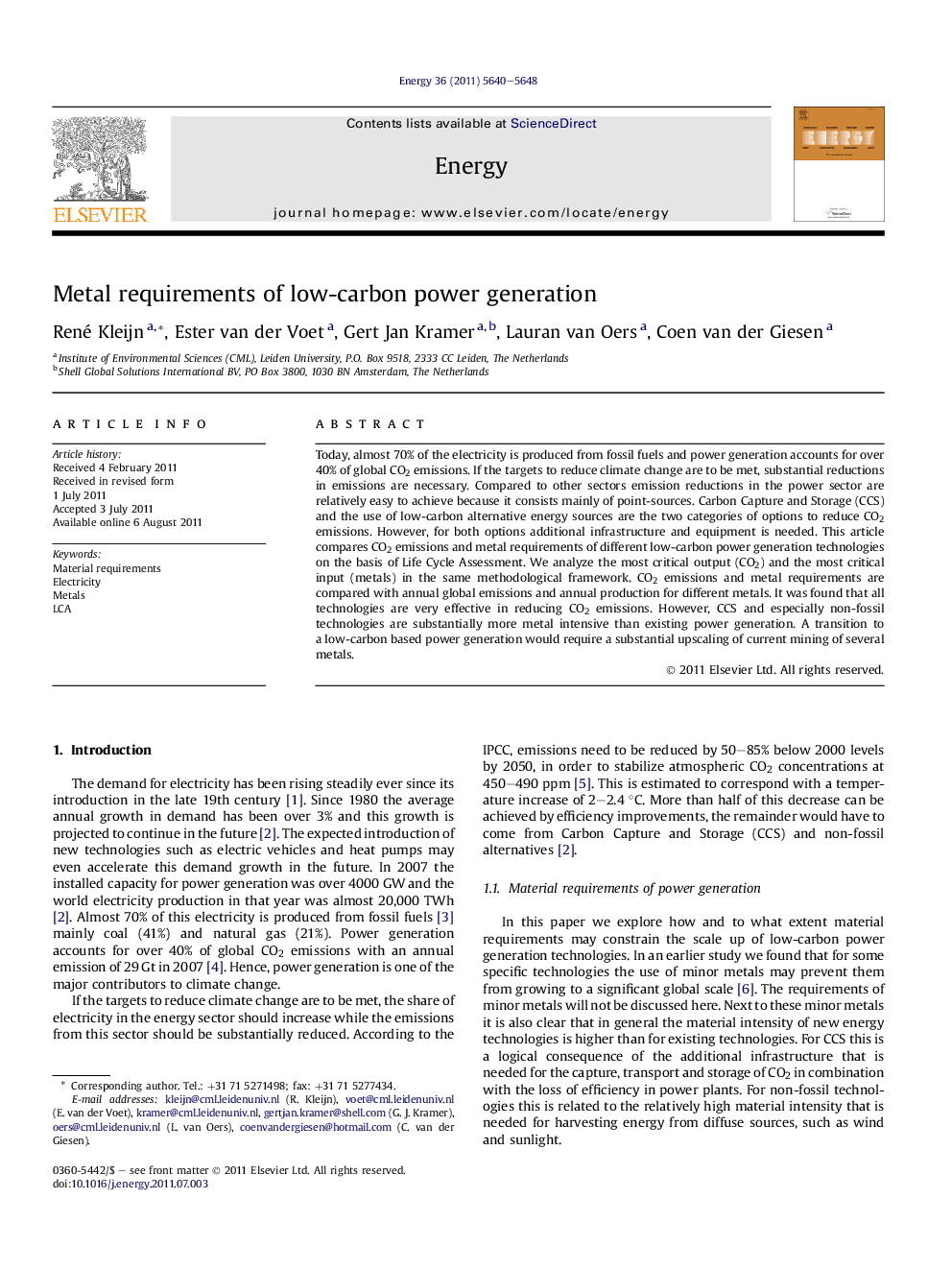| Article ID | Journal | Published Year | Pages | File Type |
|---|---|---|---|---|
| 1734586 | Energy | 2011 | 9 Pages |
Today, almost 70% of the electricity is produced from fossil fuels and power generation accounts for over 40% of global CO2 emissions. If the targets to reduce climate change are to be met, substantial reductions in emissions are necessary. Compared to other sectors emission reductions in the power sector are relatively easy to achieve because it consists mainly of point-sources. Carbon Capture and Storage (CCS) and the use of low-carbon alternative energy sources are the two categories of options to reduce CO2 emissions. However, for both options additional infrastructure and equipment is needed. This article compares CO2 emissions and metal requirements of different low-carbon power generation technologies on the basis of Life Cycle Assessment. We analyze the most critical output (CO2) and the most critical input (metals) in the same methodological framework. CO2 emissions and metal requirements are compared with annual global emissions and annual production for different metals. It was found that all technologies are very effective in reducing CO2 emissions. However, CCS and especially non-fossil technologies are substantially more metal intensive than existing power generation. A transition to a low-carbon based power generation would require a substantial upscaling of current mining of several metals.
► We analyze CO2 emissions and metal requirements of low-carbon power through LCA. ► CCS and renewables both substantially reduce CO2 emissions from power generation. ► Both require substantially more metals than the current mix. ► Transition to a low-carbon power generation requires a substantial upscaling of current mining.
